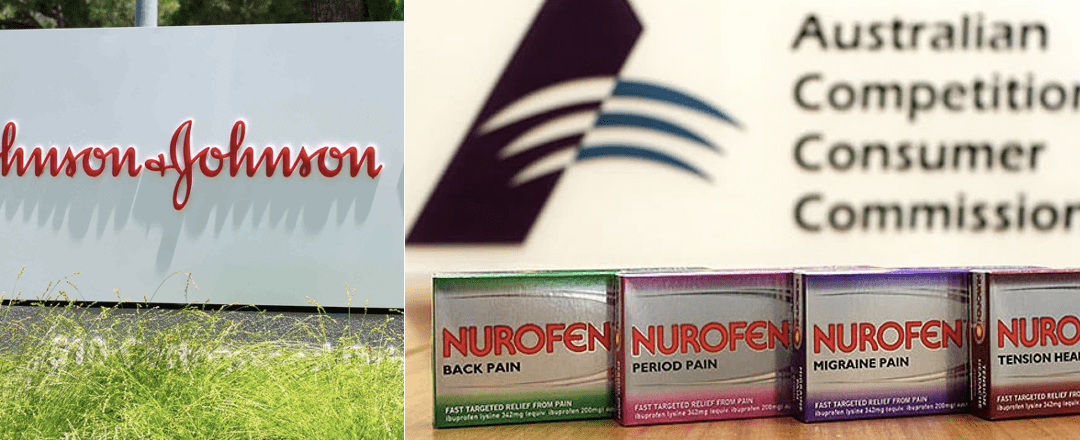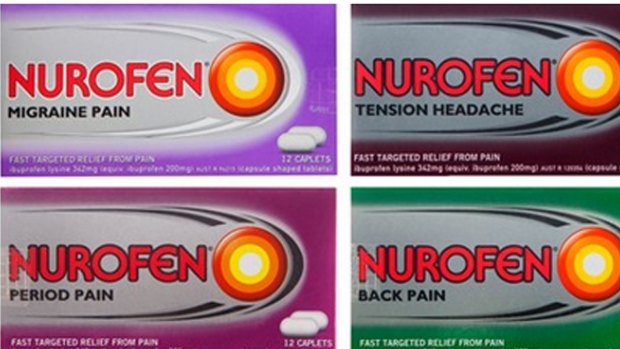Advertising exerts an influence on our choices, particularly in the sphere of women’s health products. However, a troubling concern that has emerged in recent years is the proliferation of false and misleading advertising practices within this domain. This explainer delves into misleading advertising in women’s health, focusing on the Nurofen case in Australia (2016) and the Johnson & Johnson case in the U.S. (2020). It will explore the critical issues that practitioners must consider when reporting on such stories or producing content, with a specific focus on marketing and design that necessitates meticulous caution in the realm of misleading advertising. It will also delve into the relevant misleading advertising laws, industry codes of conduct and standards, while comparing the legal systems governing false advertising in Australia and the United States as exemplified by these landmark cases.
The Nurofen Case in Australia
The Nurofen case in Australia is an illustration of the pervasive problem of false advertising in women’s health products. In 2016, the Australian Competition and Consumer Commission (ACCC) initiated legal action against Nurofen, a prominent pharmaceutical company, over its ‘specific pain’ product range. In Australia false advertising is defined by the ACCC as “businesses shouldn’t try to gain an unfair advantage by making misleading claims about their products or services. Claims should be true, accurate and based on reasonable grounds. A business must be able to prove any claim they advertise.”
Substantiation of Claims: At the heart of the Nurofen case lies the issue of unsubstantiated claims. Nurofen marketed its “specific pain” range as providing precise relief for various pain types, including menstrual pain and migraines, without irrefutable scientific evidence to support these assertions. This raises a fundamental concern – the necessity of ensuring that all advertising claims, especially those pertaining to women’s health, are underpinned by credible scientific substantiation. Practitioners should exercise vigilance in ascertaining the veracity of such claims before disseminating information.
Industry Code of Conduct: The Nurofen case underscores the significance of adhering to industry codes of conduct and standards. In Australia, the Therapeutic Goods Advertising Code and the Australian Consumer Law establish stringent guidelines for advertising therapeutic goods, including women’s health products. Media and communication practitioners must acquaint themselves with these codes to mitigate legal risks and guarantee compliance.
Penalties for False Advertising: Nurofen incurred a substantial $6 million fine for its deceptive advertising practices. This substantial penalty serves as a stark reminder that misleading advertising can lead to severe financial consequences for companies. Practitioners must understand the legal risks of misleading advertising for their clients or organisations.
The Johnson & Johnson Case in the United States
Shifting focus to the United States, the Johnson & Johnson case concerning pelvic mesh implant advertisements in 2020 offers a pertinent exemplification of the legal implications surrounding misleading advertising. In America such advertising is defined by the Federal trade commission as “Any advertisement that is misleading in a material respect” (FTC, 2023).
Class Action Lawsuits: In stark contrast to the Nurofen case, which involved regulatory action by the ACCC, the Johnson & Johnson case in the United States emanated from class-action lawsuits. Thousands of women who suffered complications from pelvic mesh implants  initiated legal proceedings against the company. This highlights the risk of extensive litigation and financial penalties for misleading advertising. Media practitioners must exercise extreme caution regarding the potential for class-action lawsuits when covering or promoting products.
initiated legal proceedings against the company. This highlights the risk of extensive litigation and financial penalties for misleading advertising. Media practitioners must exercise extreme caution regarding the potential for class-action lawsuits when covering or promoting products.
Regulatory Oversight: In the United States, the Food and Drug Administration (FDA) plays a pivotal role in regulating the marketing and safety of medical devices, including those related to women’s health. Companies like Johnson & Johnson must adhere to FDA regulations and ensure that their advertising aligns with these rules. Media and communication professionals should consider not only federal regulations but also state-level consumer protection laws that may vary across jurisdictions.
Consumer Protection Lawsuits: The Johnson & Johnson case in the United States emphasises the importance of consumer protection laws in curbing misleading advertising. State attorney generals and individual consumers can initiate legal action against companies for misleading advertising. This underscores the necessity of transparency and accuracy in advertising campaigns. Practitioners must regard awareness of the legal avenues available to consumers and regulators as indispensable for addressing misleading advertising claims.
Comparing the Legal Systems
 Regulatory Authorities: In Australia, the ACCC serves as the primary regulatory body responsible for enforcing consumer protection laws and addressing misleading advertising. Conversely, the United States features a more complex regulatory landscape, with federal agencies like the FDA overseeing specific product categories and state-level authorities handling consumer protection matters. Practitioners operating in the United States must navigate this multifaceted regulatory framework, which can differ from state to state.
Regulatory Authorities: In Australia, the ACCC serves as the primary regulatory body responsible for enforcing consumer protection laws and addressing misleading advertising. Conversely, the United States features a more complex regulatory landscape, with federal agencies like the FDA overseeing specific product categories and state-level authorities handling consumer protection matters. Practitioners operating in the United States must navigate this multifaceted regulatory framework, which can differ from state to state.
 Penalties: The penalties for misleading advertising significantly differ between the two countries. Australia imposed a $6 million fine on Nurofen, while Johnson & Johnson faced a staggering $302 million penalty in the United States. This disparity underscores the high stakes associated with misleading advertising.
Penalties: The penalties for misleading advertising significantly differ between the two countries. Australia imposed a $6 million fine on Nurofen, while Johnson & Johnson faced a staggering $302 million penalty in the United States. This disparity underscores the high stakes associated with misleading advertising.
Enforcement Mechanisms: In the Nurofen case, the ACCC initiated legal action against the company. In the United States, misleading advertising cases can originate from regulatory bodies, class-action lawsuits, or consumer protection lawsuits. Practitioners in the United States must be prepared to navigate various legal avenues in response to misleading advertising claims, while in Australia, regulatory bodies often take the lead in enforcement.
Key Considerations for Practitioners
When covering women’s health products, media professionals should be cautious, especially in marketing and design, to avoid misleading advertising.
- Verification of Claims: Prioritise the thorough verification of claims made in advertising, especially in the women’s health sector. Ensure that claims are substantiated by robust scientific evidence to prevent disseminating misleading information.
- Compliance with Industry Codes: Familiarise yourself with industry-specific codes of conduct and standards, particularly when dealing with therapeutic or health-related products. Adherence to these guidelines is critical to prevent legal violations and uphold ethical standards.
- Jurisdictional Awareness: Recognise that advertising regulations and enforcement mechanisms may vary by jurisdiction.
- Transparency and Disclosure: Promote transparency by disclosing any potential conflicts of interest or financial relationships that could influence content or reporting.
- Monitoring and Compliance: Establish mechanisms to regularly review and ensure compliance with advertising regulations. Frequent reviews and updates to advertising materials are essential to align with evolving legal requirements.
- Legal Counsel: When in doubt, seek legal counsel to review advertising materials and provide guidance on compliance with relevant laws and regulations.
Misleading advertising in women’s health products is a grave concern with significant repercussions for companies and practitioners in the media and communication industry. The cases of Nurofen in Australia and Johnson & Johnson in the United States serve as stark reminders of the legal complexities and potential consequences associated with deceptive advertising practices in this domain. Practitioners must prioritise accuracy, compliance with industry codes, and awareness of jurisdictional differences to evade legal pitfalls and safeguard both their clients and their professional reputation. By staying informed and exercising due diligence, media and communication professionals can navigate the intricate landscape of misleading advertising while upholding ethical and legal standards.


